Organic farmers are already more likely to produce more than one type of crop at a time on their farms, a practice known as "diversified farming,” with the average organic farmer producing about 7 crops on their farm. While this farming method is recognized for delivering a cascade of benefits to the soil, economics, and overall farm health—including mitigating the impact of unforeseen storms—farmers are facing challenges in reliably producing crops due to the escalating instability and damage caused by climate change-induced extreme weather events.
Overall Aim
To equip farmers with improved tools for adapting to the emerging challenges of this new reality, a $3.5 million grant from the USDA Organic Agriculture Research and Extension Initiative (OREI) program awarded to researchers at the University of Kentucky Martin-Gatton College of Agriculture will support diversified fruit and vegetable operations that serve local and regional communities across the Southeast, Midwest, and Northeast, increasing growers’ ability to match growing demand. Consumer demand for fresh, local produce accounts for nearly 45% of all organic food sales, and certified organic cropland increased 79% over the last decade. Organic food retail sales were estimated at $52 billion in 2021 (Source: USDA).
Main Project Objective
Innovating with protective barriers to enhance crop resilience
The collaborative project, "Expanding Resilient Climate and Pest Protection Systems for Diversified Organic Specialty Crop Producers,” also involving researchers from Cornell and Iowa State universities, aims to advance organic fruit and vegetable production in the Southeast, Midwest, and Northeast regions of the United States by exploring the use of mid-sized row covers of protective netting or “meso tunnels.” Essentially, these hoops of fine nylon mesh act as a row covering and dual solution to pest and climate challenges by serving as a defensive barrier for specialty crops on diversified organic farms and may extend the growing season of some crops.

In the study’s regions, organic farmers also contend with significant challenges from heavy insect, weed, and disease pest pressure. Row coverings and high tunnels, for instance, are already used in organic farming, but the height, fabric, and timing of placement of these protective netting systems need optimization to provide value. The ultimate goal for the project is to empower thousands of growers and educate millions of consumers about the benefits of “meso tunnels” and their role in sustainable organic specialty crop production.
Project Approach Assessing
Researchers on the project will focus their trials in the Southeast, Midwest, and Northeast regions of the United States, with the main objective of conducting on-farm trials with the tunnels for various crops, such as kale, broccoli, cabbage, squash, melons, peppers, and eggplant. The project hopes to seamlessly integrate the protective netting into rotations of specialty organic fruit and vegetable production, protecting yields and increasing farmer profits.
[For Dave- do you want to include any specific metrics that you’ll be measuring?]
Balancing environmental concerns and plastic usage in protective netting systems
Protective netting reduces pesticide use as a positive environmental benefit, but since the fabric is made of plastic polymers, this raises questions about its sustainability. To address this, the project will openly communicate with farmers and consumers and through the help of an advisory panel, conduct surveys and listening sessions to gather feedback. Moreover, the researchers plan to establish a national outreach program to share project learnings and insights with a wide audience.
Project timeline and next steps
The project commences in 2024 and will continue for four years:
Year 1: Field experiments and seasonal crop rotations to test the effectiveness and profitability of the meso tunnels will take place.
Year 2: Determine the cost-effectiveness of the meso tunnels
Year 3: Consumer and farmer surveys will commence to evaluate the adoption and social acceptance for the use of plastic meso tunnels.
Year 4: Communicate benefits and overall findings of the project to industry and the public through national outreach (e.g., farmer-lead demonstrations, research field days, winter conference presentations, and webinars) using stakeholder and extension contacts to produce educational materials (e.g., fact sheets, video series, and publications) for wide distribution.

